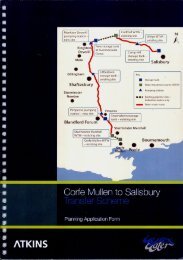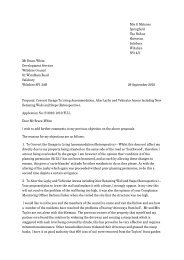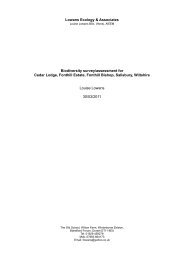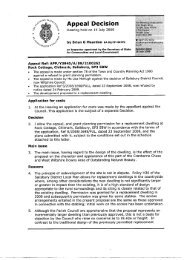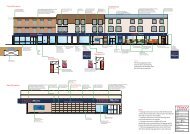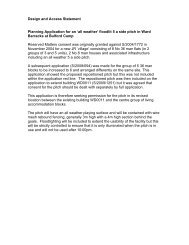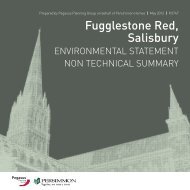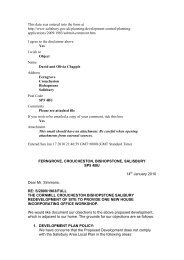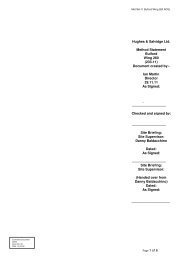English Heritage Stonehenge Environmental Improvements Project ...
English Heritage Stonehenge Environmental Improvements Project ...
English Heritage Stonehenge Environmental Improvements Project ...
Create successful ePaper yourself
Turn your PDF publications into a flip-book with our unique Google optimized e-Paper software.
3.0 RESULTS<br />
3.1 General<br />
3.1.1 The locations of sites and parts of sites are illustrated in Figure 1.1. Appendices A-E summarise<br />
the results of the botanical survey for sites V to Z respectively.<br />
3.2 Site V<br />
3.2.1 The southern part of Site V comprises the existing car parking areas for <strong>Stonehenge</strong> (Appendix<br />
A, S). The southern part of this is largely under hard standing but verges and banks of speciespoor<br />
amenity grassland are present. These are dominated by perennial rye-grass Lolium<br />
perenne and a small number of other common species of such grasslands, such as daisy Bellis<br />
perennis Dandelion Taraxacum officinale agg. and white clover Trifloium repens, and is<br />
referable to the NVC community MG7 Lolium perenne-Trifolium repens perennial rye-grasswhite<br />
clover grassland. Shrubs, mostly hawthorn Crataegus monogyna are also present in some<br />
of the grassland. The northern part of the car park has larger areas of species-poor amenity<br />
grassland very similar to that in the southern part.<br />
3.2.2 Immediately to the north of the car park is a pasture of poor semi-improved grassland<br />
(Appendix A, N), which supports a range of grass species and a small number of common<br />
grassland herbs.<br />
3.3 Site W<br />
Arable<br />
3.3.1 E 3 is an arable field. The arable weed flora is very species-poor and sparse throughout the<br />
majority of the field, although localised patches with a more species-rich and abundant<br />
community are present on some of the margins and corners, particularly the south west corner<br />
(where the quadrat was located). This supports a range of common arable weed species, such<br />
as barren brome Anisantha sterilis, common mouse-ear Cerastium fontanum, common poppy<br />
Papaver rhoeas, field pansy Viola arvensis and field speedwell Veronica persica, and is best<br />
referred to the NVC community OV3 Papaver rhoeas-Viola arvensis common poppy-field pansy<br />
community.<br />
September 2008 5 Phase II Botanical Surveys<br />
11108605R_Botanical_DW_09-08<br />
Chris Blandford Associates



